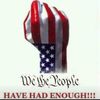tRump's Tax Plan failed economics and business as usual
Nov 16, 2017 04:57:00 #
Hemiman wrote:
How many times are you going to tell us you left the GOP ,no one cares good by,bad luck,Jump off a bridge.
Gee, I left the GOP too. Maybe we should start a club...
Nov 16, 2017 13:30:55 #
PeterS wrote:
Gee, I left the GOP too. Maybe we should start a club...
You were a member of the GOP? Now that is a belly-buster.


 Oh forgive me, I forgot you trolls are everywhere.
Oh forgive me, I forgot you trolls are everywhere.Nov 17, 2017 00:16:01 #
MS. FACTUAL wrote:
Proof? NONE! nuff said about some drunks posting.
Definition: Trickle-down economics is a theory that says benefits for the wealthy trickle down to everyone else. These benefits are usually tax cuts on businesses, high-income earners, capital gains and dividends.
Trickle-down economics assumes investors, savers and company owners are the real drivers of growth. It assumes they’ll use any extra cash from tax cuts to expand businesses. Investors will buy more companies or stocks.
Banks will increase business lending. Owners will invest in their operations and hire workers. The theory says these workers will spend their wages, driving demand and economic growth.
Trickle-Down Economic Theory
Trickle-down economic theory is similar to supply-side economics. That theory states that all tax cuts, whether for businesses or workers, spur economic growth. Trickle-down theory is more specific. It says targeted tax cuts work better than general ones. It advocates cuts to corporations, capital gains and savings taxes. It doesn't promote across-the-board tax cuts. Instead, the tax cuts go to the wealthy.
Both trickle-down and supply-side economists use the Laffer Curve to prove their theories. Arthur Laffer showed how tax cuts provide a powerful multiplication effect. Over time, they create enough growth to replace the government revenue lost from the cuts. That's because the expanded, prosperous economy provides a larger tax base.
But Laffer warned that this effect works best when taxes are in the "Prohibitive Range." This range goes from a 100 percent tax rate down to some hypothetical rate somewhere in the middle. If the tax rate falls below this range, then further cuts will only lower government revenue without stimulating economic growth.
Did It Work?
During the Reagan Administration, it seemed like trickle-down economics worked. His policies, known as Reaganomics, helped end the 1980 recession.
Reagan cut taxes significantly. The top tax rate fell from 70 percent (for those earning $108,000+) to 28 percent (for anyone with an income of $18,500 or more). Reagan also cut the corporate tax rate from 46-40 percent.
Trickle-down economics was not the only reason for the recovery, though. Reagan also increased government spending by 2.5 percent a year.
That almost tripled the federal debt. It grew from $997 billion in 1981 to $2.85 trillion in 1989. Most of the new spending went to defense. It supported Reagan's successful efforts to end the Cold War and bring down the Soviet Union. Trickle-down economics, in its pure form, was never tested. It's just as likely that massive government spending ended the recession. (Source: William A. Niskanen, "Reaganomics," Library of Economics and Liberty.)
President George W. Bush used trickle-down theory to address the 2001 recession. He cut income taxes with EGTRRA. That ended the recession by November of that year.
But unemployment rose to 6 percent. That often occurs, because unemployment is a lagging indicator.
It takes time for companies to start hiring again, even after a recession has ended. Nevertheless, Bush cut business taxes with JGTRRA in 2003.
It appeared that the tax cuts worked. But, at the same time, the Federal Reserve lowered the fed funds rate. It fell from 6 percent to 1 percent. It's unclear whether tax cuts or another monetary policy caused the recovery.
Trickle-down economics says that Reagan's lower tax rates should have helped people in all income levels. In fact, the opposite occurred. Income inequality worsened. Between 1979 and 2005, after-tax household income rose 6 percent for the bottom fifth. That sounds great until you see what happened for the top fifth. Their income increased by 80 percent. The top 1 percent saw their income triple. Instead of trickling down, it appears that prosperity trickled up.
https://www.thebalance.com/trickle-down-economics-theory-effect-does-it-work-3305572
Nov 17, 2017 04:48:56 #
PoppaGringo wrote:
You were a member of the GOP? Now that is a belly-buster. 

 Oh forgive me, I forgot you trolls are everywhere.
Oh forgive me, I forgot you trolls are everywhere.


 Oh forgive me, I forgot you trolls are everywhere.
Oh forgive me, I forgot you trolls are everywhere.I voted republican until 2000. After 2000 vote GOP any more...
Nov 17, 2017 19:50:36 #
If you want to reply, then register here. Registration is free and your account is created instantly, so you can post right away.


